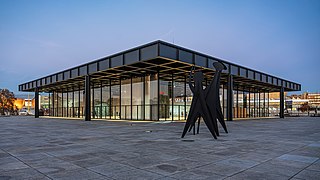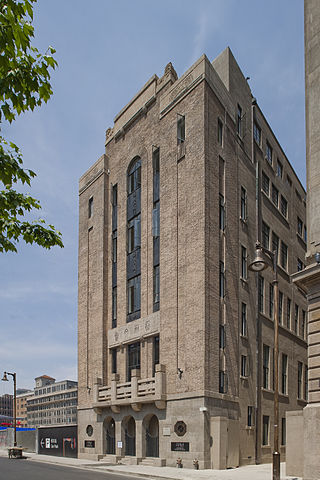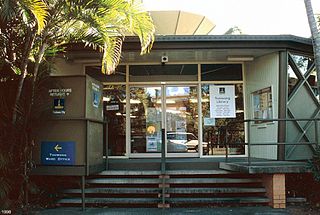
Renzo Piano is an Italian architect. His notable buildings include the Centre Georges Pompidou in Paris, The Shard in London (2012), the Whitney Museum of American Art in New York City (2015), İstanbul Modern in Istanbul (2022) and Stavros Niarchos Foundation Cultural Center in Athens (2016). He won the Pritzker Architecture Prize in 1998.

Chicago's architecture is famous throughout the world and one style is referred to as the Chicago School. Much of its early work is also known as Commercial Style. In the history of architecture, the first Chicago School was a school of architects active in Chicago in the late 19th, and at the turn of the 20th century. They were among the first to promote the new technologies of steel-frame construction in commercial buildings, and developed a spatial aesthetic which co-evolved with, and then came to influence, parallel developments in European Modernism. A "Second Chicago School" with a modernist aesthetic emerged in the 1940s through 1970s, which pioneered new building technologies and structural systems, such as the tube-frame structure.

Sendai is the capital city of Miyagi Prefecture, the largest city in the Tōhoku region. As of 1 June 2020, the city had a population of 1,091,407 in 525,828 households, and is one of Japan's 20 designated cities. The city was founded in 1600 by the daimyō Date Masamune. It is nicknamed the City of Trees; there are Japanese zelkova trees lining many of the main thoroughfares such as Jōzenji Street and Aoba Street. In the summer, the Sendai Tanabata Festival, the largest Tanabata festival in Japan, is held. In winter, the trees are decorated with thousands of lights for the Pageant of Starlight, lasting through most of December.
The year 2001 in architecture involved some significant architectural events and new buildings.

The Neue Nationalgalerie at the Kulturforum is a museum for modern art in Berlin, with its main focus on the early 20th century. It is part of the National Gallery of the Berlin State Museums. The museum building and its sculpture gardens were designed by Ludwig Mies van der Rohe and opened in 1968.

A curtain wall is an outer covering of a building in which the outer walls are non-structural, designed only to keep the weather out and the people in. Because the curtain wall façade carries no structural load beyond its own dead load weight, it can be made of lightweight materials. The wall transfers lateral wind loads upon it to the main building structure through connections at floors or columns of the building.

Toyo Ito is a Japanese architect known for creating conceptual architecture, in which he seeks to simultaneously express the physical and virtual worlds. He is a leading exponent of architecture that addresses the contemporary notion of a "simulated" city, and has been called "one of the world's most innovative and influential architects."

The Reliance Building is a skyscraper located at 1 W. Washington Street in the Loop community area of Chicago, Illinois. The first floor and basement were designed by John Root of the Burnham and Root architectural firm in 1890, with the rest of the building completed by Charles B. Atwood in 1895. It is the first skyscraper to have large plate glass windows make up the majority of its surface area, foreshadowing a design feature that would become dominant in the 20th century.

Contemporary architecture is the architecture of the 21st century. No single style is dominant. Contemporary architects work in several different styles, from postmodernism, high-tech architecture and new interpretations of traditional architecture to highly conceptual forms and designs, resembling sculpture on an enormous scale. Some of these styles and approaches make use of very advanced technology and modern building materials, such as tube structures which allow construction of buildings that are taller, lighter and stronger than those in the 20th century, while others prioritize the use of natural and ecological materials like stone, wood and lime. One technology that is common to all forms of contemporary architecture is the use of new techniques of computer-aided design, which allow buildings to be designed and modeled on computers in three dimensions, and constructed with more precision and speed.
The World Architecture Survey was conducted in 2010 by Vanity Fair, to determine the most important works of contemporary architecture. 52 leading architects, teachers, and critics, including several Pritzker Prize winners and deans of major architecture schools were asked for their opinion.
The Ito-Balmond Serpentine Pavilion is a structure designed by Cecil Balmond and Toyo Ito and originally built for the Serpentine Gallery Pavilion programme in London's Kensington Gardens, Hyde Park, in 2002 and now part of a restaurant in southern France. It focuses on modern and contemporary art. Each year the Serpentine Gallery builds a temporary structure for the summer in its grounds, and projects are led by director Julia Peyton-Jones. The Ito-Balmond Serpentine Pavilion has been hailed as one of the most successful temporary pavilions to date. Jonathan Glancey, architecture critic for the UK's The Guardian, called it "one of the most exquisite and revolutionary buildings of recent times." The design is based on an algorithm designed by Balmond. "Although fun to look at, this structure was rooted in complex geometry…the pavilion had no façade and no hidden structural frame behind it… what you saw was 100% pure structure, its holistic beauty like that of a crystal or a snowflake." Balmond was awarded the Gengo Matsui Prize for the pavilion, one of the highest awards for engineering given in Japan. The pavilion now serves as the beach club restaurant of a luxury hotel in Le Beauvallon, across the bay from Saint-Tropez in southern France. Ito and Balmond have since collaborated on the Taichung Opera House in Taiwan.

The Kunsthaus Bregenz (KUB) presents temporary exhibitions of international contemporary art in Bregenz, Vorarlberg (Austria).

Architecture of the night or nocturnal architecture, also referred to as illuminated architecture and, particularly in German, light architecture, is architecture designed to maximize the effect of night lighting, which may include lights from within the building, lights on the facade or outlining elements of it, illuminated advertising, and floodlighting.

The Bronx Library Center is a branch of the New York Public Library in the Fordham section of the Bronx in New York City. The library is located at 310 East Kingsbridge Road between Fordham Road and East 192nd Street, two blocks east of the Grand Concourse. It is the central library for the Bronx.

The Rockbund Art Museum is a contemporary art museum in central Shanghai. The museum is on Huqiu Road, in the former Royal Asiatic Society building completed in 1933 near The Bund waterfront. The museum is dedicated to being an influential, innovative, sustainable organization devoted to the promotion of projects within the field of international contemporary art. There are no permanent collections. Featured Chinese artists have included Cai Guo-Qiang and Zeng Fanzhi.

The Toowong Municipal Library Building is heritage-listed former public library at 579–583 Coronation Drive, Toowong, City of Brisbane, Queensland, Australia. It was designed by James Birrell and built in 1961 by Stuart Brothers. It was added to the Queensland Heritage Register on 28 August 1998. In 2001, the library moved to Toowong Village Shopping Centre and the original building has been used as business premises.

Tama Art University Library is the academic library associated with Tama Art University consisting of two library locations in Tokyo, Japan: one on the Hachioji campus and the other on the Kaminoge campus. Together, the libraries serve university students and faculty as an information database with a primary focus on art education and research. Its collection also includes materials on design, architecture, film, photography, and other related topics of study.

Reserve Bank of Australia Building is a heritage-listed bank building at 65 Martin Place, Sydney, New South Wales, Australia. It was added to the Australian Commonwealth Heritage List on 22 June 2004.

The City Mutual Life Assurance Building is a heritage-listed commercial building located at 60-66 Hunter Street, in the Sydney central business district, in the City of Sydney local government area of New South Wales, Australia. It was built during 1936. It is also known as CML Building and 10 Bligh Street. It was added to the New South Wales State Heritage Register on 2 April 1999.

The TU Delft Library is the main library of the Delft University of Technology, located in Delft, Netherlands. It was designed by the Dutch architecture firm Mecanoo and built in 1997. It is the largest technical scientific library in the Netherlands.



















